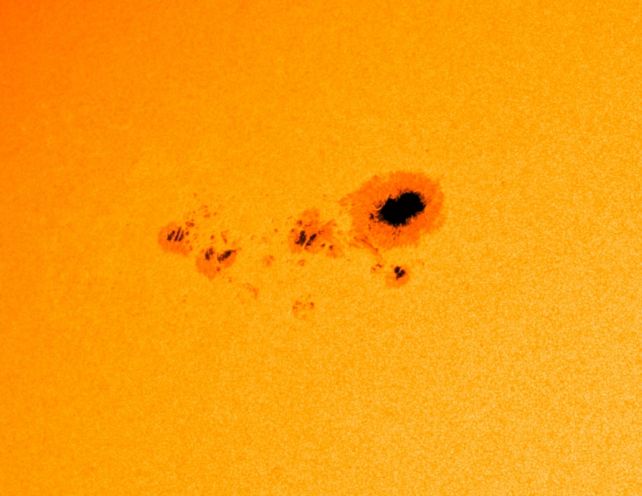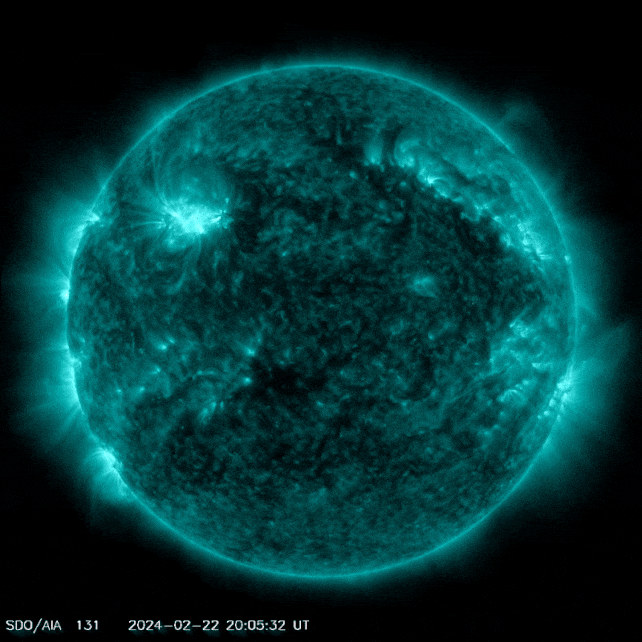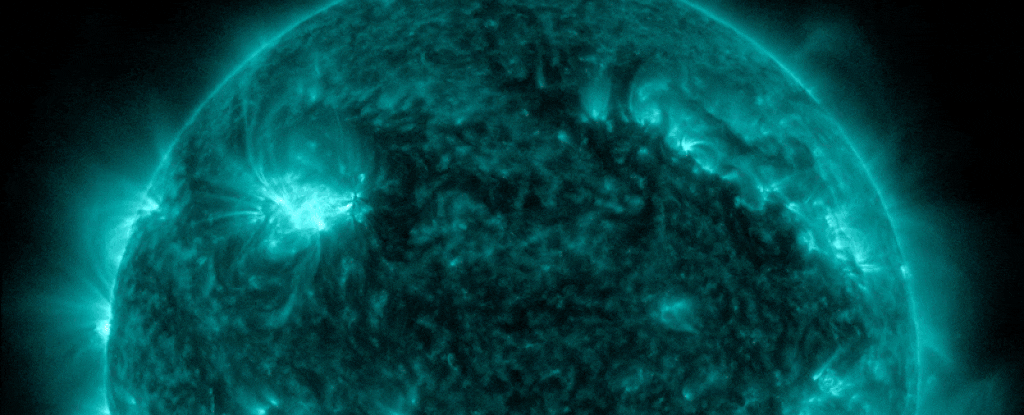The Sun is having a moment.
Within 24 hours, several X-class flares have erupted from its surface - the most powerful of which was a jaw-dropping X6.3. That's the most powerful flare seen for the current solar cycle, and the most powerful since an X8.2 erupted in 2017.
Although there is no danger to life or infrastructure on Earth, interruptions to high-frequency radio communications and even blackouts may have ensued on the sunlit side of Earth. And the sunspot region responsible, AR 3590, is rotating towards the center of the Sun's disk, which means it may emit a more Earth-directed eruption as it continues to evolve.
The three flares were, respectively, an X1.8 flare that peaked at 6:07 pm EST on February 21, an X1.7 flare that peaked at 1:32 am EST on February 22, and the X6.3 flare that peaked at 5:34 pm EST, also on February 22. The ultraviolet flux produced by these events is responsible for any radio blackouts.

Any of the more worrisome effects on Earth are usually produced by a coronal mass ejection, or CME. These often accompany flares, ejections of billions of tons of coronal plasma, with magnetic fields embedded within.
Neither of the first two flares were accompanied by a CME; at the time of writing, there was no word on whether the third, largest flare was similarly bereft.
X-class flares are the most powerful flares on the scale. At their worst, they can trigger wide-scale communications blackouts and cause damage to satellites, but both the NOAA and the UK Met Office report that the most recent flare activity poses no threat to Earth.

This sort of behavior isn't unexpected for the Sun. Our star goes through periodic cycles of activity: every 11 or so years, its magnetic field reverses polarity – that is, its north and south magnetic poles switch places.
Leading up to the switch, the Sun gets more and more active. There are more sunspots, more flares, and more CMEs.
The polarity reversal happens as activity reaches a peak known as solar maximum, before the Sun starts to quiet down again. Scientists think we are very close to solar maximum right now (although we only know months after it has taken place, because scientists calculate it based on declining solar activity).
Each solar cycle is different, and predicting how they will go is not easy. We're currently in the 25th solar cycle since counting began. Solar cycle 24 was a pretty quiet, subdued one, and scientists thought 25 would probably go the same way. However, it has been far stronger than official forecasts initially predicted.

That doesn't mean anything bad for us, but it could mean that we need to rethink our understanding of how the Sun works.
Meanwhile, we have likely not heard the last of AR 3590. The sunspot region is very magnetically complex, with features that are consistent with a high likelihood of the reconnection of magnetic field lines. This is the process that unleashes the torrent of energy and plasma known as a solar flare.
AR 3590 has a rare magnetic classification given to sunspot regions most likely to spit out powerful solar flares, so we may not have seen the last of its shenanigans. And maybe we'll even get a mild CME, sending just enough solar particles to rain down into Earth's ionosphere and generate strong, beautiful aurorae.
